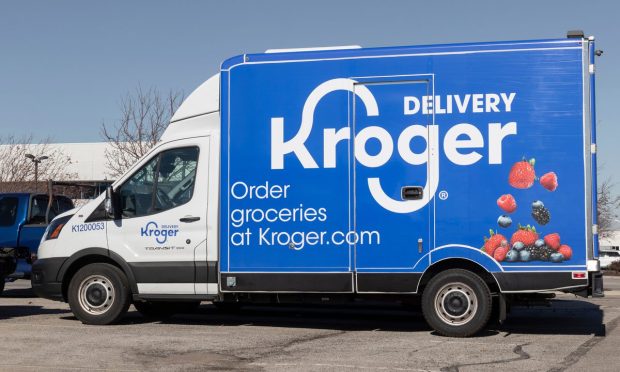Kroger Shifts Focus From Third-Party to in-House eCommerce Fulfillment

Kroger is taking its digital delivery business into its own hands.
The grocery giant announced Wednesday (April 20) that it is hiring more than 200 new employees to gear up for the launch of Kroger Delivery in South Florida. The company is looking not only for drivers but also for people to help with the logistics side of the business.
“We are thrilled about the opportunity to provide fresh food and convenient services to customers throughout South Florida,” Andrea Colby, eCommerce corporate affairs and communications manager at Kroger, said in a statement. “The service combines the efficiency of technology with the experience of our associates to deliver fresh, affordable groceries directly to customers’ homes.”
The announcement suggests a change of tune for Kroger, which until now has primarily relied on Instacart to power its eCommerce delivery business. Certainly, there are advantages for the grocer to bringing delivery in-house, such as owning the transaction and retaining the full share of the profit, among others.
Research from PYMNTS’ August study “What Consumers Expect From Their Grocery Shopping Experience,” created in collaboration with ACI Worldwide, found that 23% of consumers reported buying online directly from grocers and having the products delivered to their homes, and 8% of consumers ranked this as their most preferred channel.
Read more: Digital Features Can Help Grocers Win Over 43% of Shoppers
Conversely, the report, which drew from a June survey of more than 2,300 U.S. adults, found that just 11% of consumers reported buying online using an aggregator that delivers the products the same day, and only 2% preferred this method above all other purchasing channels.
Even as the stay-at-home economy of the early stages of the pandemic transitions into a hybrid lifestyle for many consumers, and even as some consumers go back to their offices full time and resume their routines away from home, online grocery adoption continues to grow.
Overall, 18% of consumers are purchasing groceries through digital channels more often than in stores, according to data from PYMNTS’ study “Decoding Customer Affinity: The Customer Loyalty to Merchants Survey 2022,” created in collaboration with Toshiba Global Commerce Solutions. Many expect that share to increase in the years to come.
Get the report: The Customer Loyalty to Merchants Survey 2022
“In the years leading up to and during the pandemic, there was a ton of growth and investment in the space,” Ashwin Wadekar, director of global strategy at online grocery delivery eTailer Gorillas, told PYMNTS in a July interview. “Now, demand is greater than ever. What began as an early adopter trend pre-pandemic and suddenly became a necessity as lockdowns hit has now turned into something that consumers see as customary when it comes to their grocery shopping experience.”
See more: Gorillas Aims to Bring eGrocery Into the Future With Lightning-Fast Delivery
